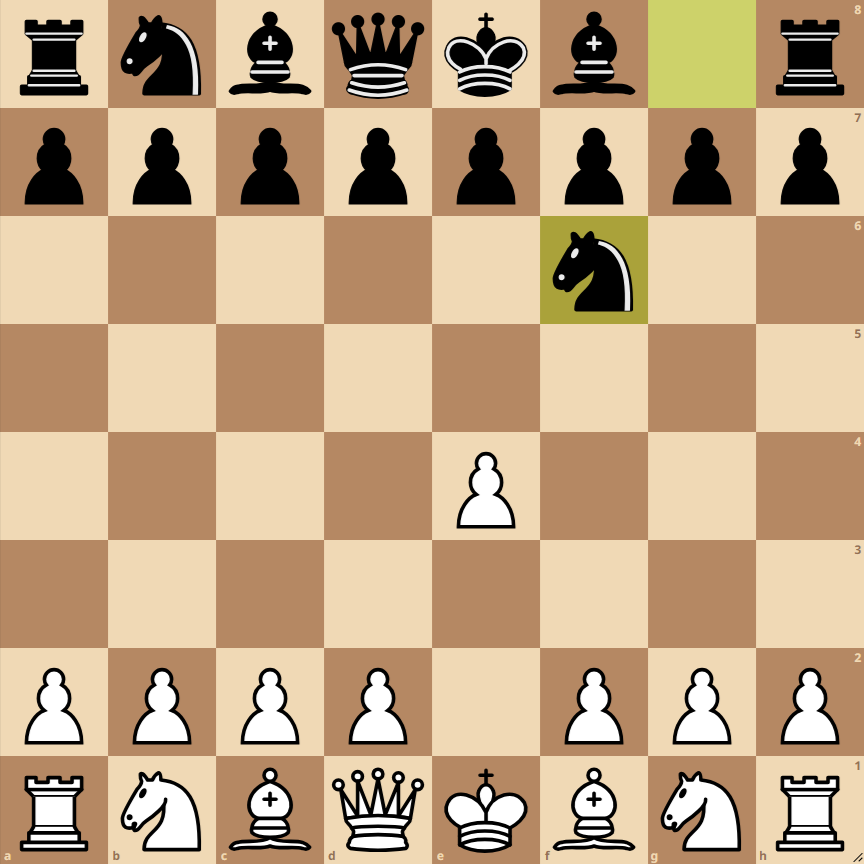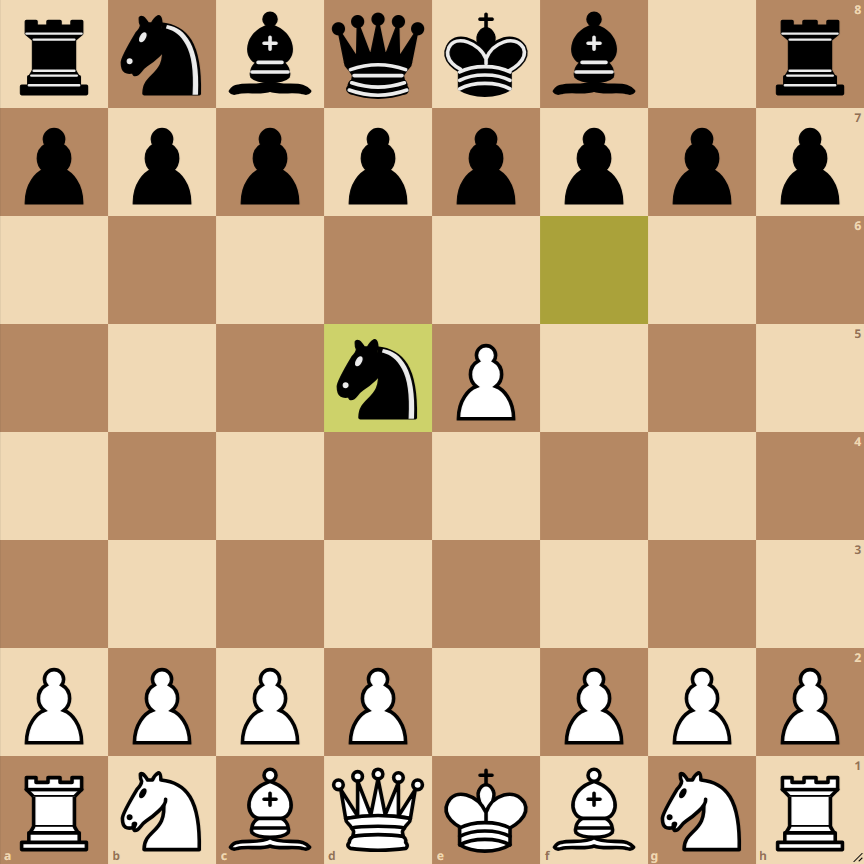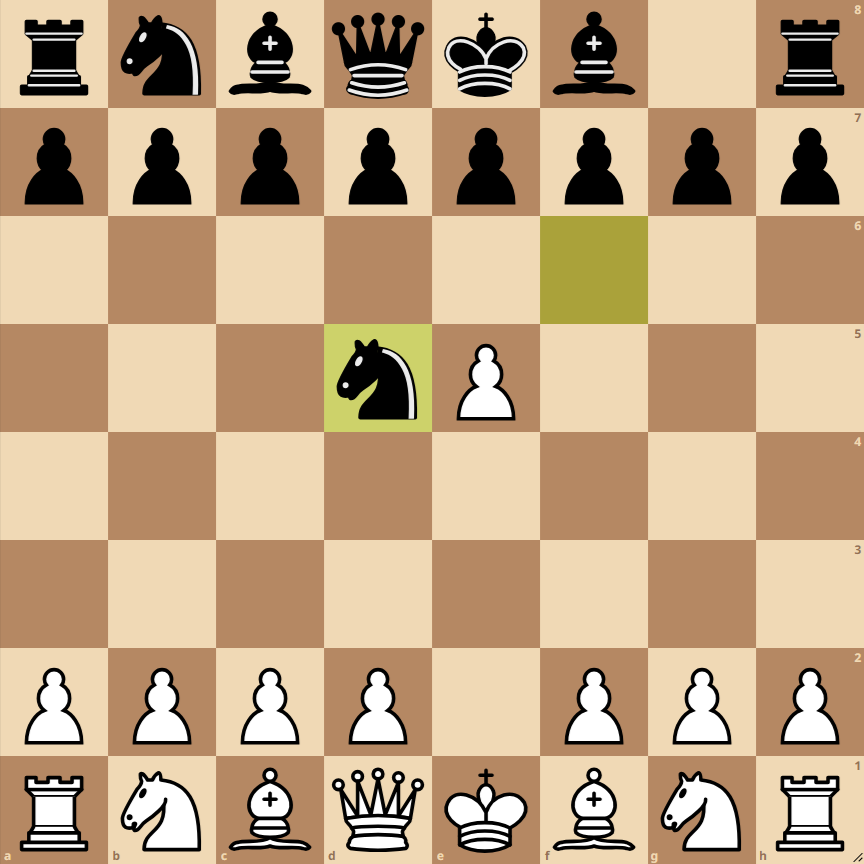How to Play the Alekhine Defense


The Alekhine Defense is a chess opening that starts with the following moves:
- 1. e4: White advances their king’s pawn two squares, occupying the center and controlling squares d4 and f5.
- 1… Nf6: Black responds by moving their knight to the king’s flank. This move challenges White’s central pawn and sets the stage for dynamic counterattacks.
- 2. e5: White advances their king’s pawn one more square, attacking the black knight and gaining space in the center.
- 2… Nd5: The black knight relocates to d5, a strong central square, and continues to challenge White’s pawn structure.
Variations of the Alekhine Defense
There are several variations in the Alekhine Defense, each with its own characteristics and strategic plans.
Four Pawns Variation
In this variation, White aims for central dominance with 3. c4 and 4. f4. It’s aggressive and seeks to exploit space but requires careful attention to king safety.
Exchange Variation
White can opt to exchange their e5 pawn for the knight on d5. This line aims to simplify the position and reduce game complexity.
Modern Variation
Here, White focuses on piece development without advancing the f-pawn prematurely. This variation leads to a more positional and strategic game.
Chess Opening: Alekhine Defense, Normal Variation
Initial Moves: 1. e4 Nf6 2. e5 Nd5
The Alekhine Defense is a chess opening that starts with the moves 1. e4 Nf6, followed by 2. e5 Nd5. This opening is known for its dynamic and slightly provocative character. Black seeks to induce White to overextend their central pawn structure, with the aim of later attacking and dismantling it.
Strategies and Tactics
For White:
- Central Control and Space: With 1.e4 and 2.e5, White gains space and controls the center. The advance of the e-pawn to e5 is critical, as it pushes the black knights into less active positions.
- Development and Preparation for the Middlegame: White should develop their pieces slightly (bishop, knights) and place pawns in positions that control the center and support future actions on the kingside or queenside. Common moves include d4, c4, or Nc3.
- d4: Strengthens the center and opens lines for the light-squared bishop and queen.
- c4: Expands control in the center and prepares the path for the knight to move to c3.
- Nc3: Develops a piece and controls important central squares.
For Black:
- Counterplay and Attacking the Pawn Structure: Black looks to pressure White’s advanced pawn structure, often aiming to dismantle the pawn center or exploit its overextension.
- Flexible and Opportunistic Development: Black’s piece development should be flexible, aiming to exploit weaknesses in White’s position. Moves like d6 (which attacks the advanced e5 pawn) and the subsequent placement of bishops and queen can be crucial.
- Play on Flanks and Center: Black must be alert to opportunities in both the center and the flanks, depending on how White chooses to play.
Final Considerations:
The Alekhine Defense is an opening that offers rich and dynamic play for both sides. It requires a deep understanding of chess tactics and strategies, as well as the ability to adapt to the opponent’s responses. For both players, control of the center, effective piece development, and the creation of a flexible game plan are essential to make the most of this opening.
I have retained the HTML tags
,
,
, ,
- , and

